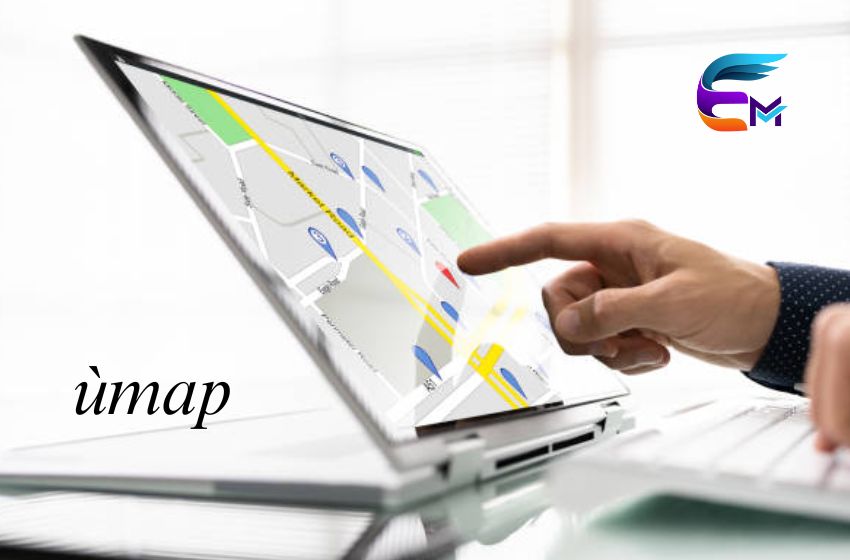Ùmap is an innovative open-source mapping tool designed to facilitate the creation of custom maps and the visualization of complex data. This powerful platform is highly regarded for its versatility, ease of use, and ability to handle a wide range of applications. Whether you’re involved in urban planning, environmental conservation, disaster response, or simply looking to visualize data for better decision-making, Ùmap offers a comprehensive suite of features to meet your needs.
Table of Contents
ToggleThe Core Features of Ùmap
Ùmap stands out due to its robust set of features that cater to diverse mapping requirements. Some of the core features include:
Real-time Updates
Ùmap provides access to the most current information available, whether you’re tracking traffic patterns, monitoring weather conditions, or analyzing market trends. This capability ensures that users can make decisions based on the latest data.
Customization
The customization options in Ùmap are extensive. Users can create maps tailored to their specific needs by adding custom data layers, changing colors and symbols, and incorporating multimedia elements. This level of customization makes Ùmap suitable for various professional and personal projects.
Collaboration
One of the standout features of Ùmap is its ability to facilitate real-time collaboration. Multiple users can work on a mapping project simultaneously, making it an excellent tool for teams and communities that need to collaborate on planning and analysis.
Applications of Ùmap
The versatility of Ùmap allows it to be used in a wide range of applications across different industries. Here are some notable examples:
Urban Planning
Ùmap is an invaluable tool for urban planners. It helps visualize city growth, map infrastructure, and analyze traffic flow. By overlaying different data layers, planners can better understand the spatial relationships and make more informed decisions about urban development.
Environmental Conservation
Environmentalists use Ùmap to track changes in ecosystems, monitor habitats, and develop conservation strategies. The ability to overlay various environmental data layers allows for a comprehensive analysis of human activity’s impact on natural resources.
Emergency Response
In disaster management, Ùmap provides real-time situational awareness, helping first responders coordinate their efforts effectively. Predictive modeling tools within Ùmap can anticipate potential disasters, allowing for better preparation and response strategies.
Benefits of Using Ùmap
Ùmap offers numerous benefits that enhance navigation, decision-making, and productivity. Here are some key advantages:
Enhanced Navigation and Wayfinding
Ùmap simplifies navigation by providing real-time traffic data and route optimization. This feature is beneficial for drivers, pedestrians, and public transit users, ensuring they can find their way around efficiently.
Better Decision Making
The data visualization tools in Ùmap help users spot patterns and trends that might not be apparent in raw data. By seeing data in a geographic context, users can make more informed decisions, whether they are business owners, researchers, or city planners.
Increased Efficiency and Productivity
Ùmap streamlines the process of creating and sharing maps, saving users time and effort. Its collaborative features allow teams to work together seamlessly, regardless of their physical location.
Challenges and Opportunities with Ùmap
Despite its powerful capabilities, Ùmap is not without challenges. Here are some common issues and the opportunities they present:
Learning Curve
Some of Ùmap’s functionalities can be complex and require specialized training. However, with the growing Ùmap community and available tutorials, users can quickly become proficient.
Data Accuracy
The quality of the maps produced by Ùmap depends on the accuracy of the input data. Users must ensure they are working with reliable data sources to avoid misleading results.
Privacy Concerns
Handling sensitive location data necessitates robust security measures. Ùmap addresses these concerns with advanced encryption and access controls to protect user data.
The Future of Ùmap
The future of Ùmap looks promising, with several exciting developments on the horizon:
AI Integration
Artificial intelligence and machine learning could automate many of the tedious tasks involved in mapping, allowing human experts to focus on higher-level analysis and decision-making.
Enhanced Visualization
Advances in 3D mapping and virtual reality will enable users to explore maps in more immersive and engaging ways, providing deeper insights into spatial data.
Predictive Analytics
By combining Ùmap with predictive analytics, users can anticipate future trends and challenges, such as traffic congestion and natural disasters, making it a crucial tool for proactive planning.
Conclusion: Why Ùmap is Essential
Ùmap is a versatile and powerful mapping tool that caters to a wide range of needs, from business analytics to environmental conservation. Its user-friendly interface, customizable features, and collaborative capabilities make it an essential tool for businesses, organizations, and individuals alike. Whether you are a business owner analyzing market trends or an urban planner designing sustainable city layouts, Ùmap offers the tools you need to visualize and understand your data effectively.
For more insights into how Ùmap can benefit your projects, explore the features and applications discussed in this article, and consider incorporating this powerful tool into your workflow. As we look to the future, Ùmap’s ongoing development promises to bring even more innovative solutions to the world of digital mapping and data visualization.
Empire Magazines highly recommends Ùmap for anyone seeking to enhance their data visualization capabilities and make more informed decisions based on spatial analysis. By leveraging Ùmap’s features, users can unlock new levels of productivity and insight, ensuring their projects are successful and impactful.

